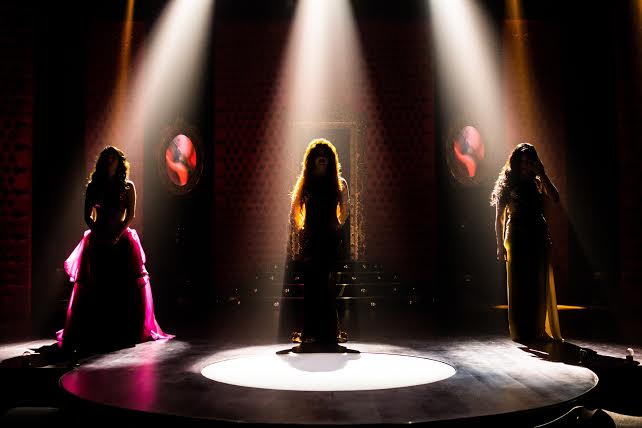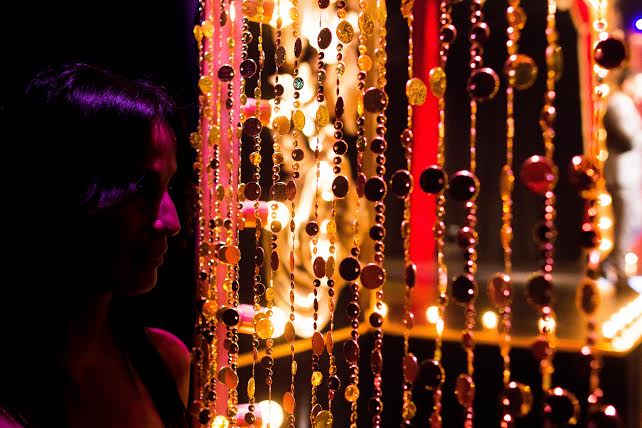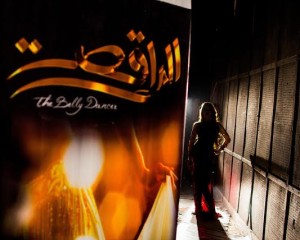
Belly dancing is undeniably ubiquitous in Egyptian culture. Whether it’s stumbling into Samakmak Sahel after a long night out, awkwardly watching distant relatives ogle during weddings, or pulling moves of your own on the dance floor, we’ve all grown up with belly dancing around us.
What is equally undeniable, however, is belly dancing’s “fall from grace” – the noticeable decline in its position in society, as evidenced by Alaa Al Aswany’s recently published New York Times piece “Dirty Dancing in Egypt”. With the imminent release of Al Raqisa – a groundbreaking belly dancing reality show – Egyptians the world over will come face to face with a cultural legacy equally revered and disdained.
Al Raqisa, produced by Luv Media and aired on Al Qahera W Al Nas, is the first show of its kind in the Middle East. The first televised international belly-dancing competition, Al Raqisa brings together 27 professional belly dancers from over 10 countries to compete for a starring role in their own music video clip, a feature film role and the title of the world’s premier dancer.
The dancers will be judged by none other than the notorious Dina – perhaps the last of Egypt’s greats to earn international acclaim – along with actress Feryal Youssef and screenwriter Tamer Habib.
The premise of this show evolved from an examination of the state of belly dancing in Egypt today. Despite its prolific history in Egypt, belly dancing is now a dying art in the country that founded it while it is blooming elsewhere in the world. With competitions organized the world over, the belly dancing scene has now become extremely prominent from Australia to Japan, with a notably large following in Russia.
When casting in Moscow, the Al Raqisa production team was blown away by the prevalence of belly dancing as a nationwide phenomenon. Despite selecting Russia specifically because of the large following the dance form has, they did not expect the large turnout nor the fervor surrounding both belly dancing in general, and Dina in specific.
Aside from dancers traveling from neighboring countries to attend auditions, hundreds more flocked to attend special workshops with Dina or simply meet the starlet in real life. In a country with a history of dance as rich as Russia, belly dancing is now serious art form, a viable career path and an industry worth hundreds of thousands of dollars.

The response in Russia was made even more shocking when compared to that of Egypt, which ironically proved the most difficult when it came to casting. The taboo surrounding belly dancing is complicated and nuanced, as it suffers from “associative stigma” whereby a subject matter is stigmatized due to its supposed association with another. In the case of belly dancing, its modern day association with prostitution has made it a perverse and publicly condemned subject.
Consequently, the connotation behind the word itself has been sullied, with the term “ra2asa” or “belly dancer” often being used to insinuate promiscuity and vulgarity (“Shaklaha zay el ra2asa”). As a result, even dancers who seemingly took pride in their profession were reluctant to audition for the program due to a fear of being publicly recognized and labelled as a “belly dancer”.
This self-conscious and publicly shamed archetype stands in stark contrast to the profile of an international belly dancer. While belly dancers in Egypt stereotypically come from a lower socioeconomic background, hold no academic degree or professional training, and utilize belly dancing as a source of income to scrape money together, that is not the case elsewhere.
As audiences will see firsthand through the show, the international belly dancer is not a morally depraved hustler. She is a teacher, a competitor. She has taken workshops in technique, and spent grueling hours perfecting her art. She has made a financial investment in her trade, traveling to festivals and competitions. She holds a Bachelor’s, Master’s or even a PhD.
She could be a TV presenter, a reporter, or an advertising executive or she could have a full-time job, steady income, and concrete career path as a belly dancer. She is a belly dancer by choice, not by necessity. And that is precisely what Al Raqisa seeks to address.
In the past, belly dancing was revered as a cultural art form. Stars such as Taheya Karyouka, Nagwa Fouad and Samia Gamal were considered icons of their time and staples of the Egyptian arts and culture scene. However, in recent years, belly dancing has increasingly been pushed out of the public sphere and confined to the private. As the “space” this art form occupies shrunk smaller and smaller in size, it was inevitably relegated to the seedy back alleys of Share3 El Harem and the neon-lit boudoirs of cabarets.

Consequently, belly dancing became associated with prostitution, as evidenced and further perpetuated by certain phenomena such as Qanat El Tit. Much like Qanat El Tit exemplifies the degeneration of the art form, Al Raqisa is utilizing the same airways to elevate it.
Al Raqisa seeks to show its audiences that belly dancing is an art that can be done with elegance, grace, poise and class. The show aims to rectify the common misconception that belly dancing is nothing more than suggestive vulgarity – and it is doing so by casting a global scope.
As Egyptians, we are notorious for “3o2dit el afrangi” – an indescribable and irrational reverence for all that is foreign to us. Tell any Egyptian something is locally made, they’ll criticize and scoff. The second you stick a “Made In (insert Western country here)” label, it immediately triples in value – both monetary and socially.
Al Raqisa plays on this fascination by showing that belly dancing is no longer local, it is an internationally valued art. While we spend our time lamenting over the illusive “Golden Age of Egyptian Culture and Arts”, there is a parallel universe where a locally-created art form is being exported worldwide with Egypt at its epicenter!
Despite our disdain for the dance, we still have an edge. While we currently fall behind a dance scene that is increasingly professionalized, Egyptian belly dancers still have an intangible advantage – a cultural heritage, instinctual acumen and lyrical understanding that is hard to match through mere choreography and discipline. However, that will not always be the case.
Without public appreciation, dance cannot be elevated. While abroad belly dancers are heralded as artists and role models, Egyptian society attacks and criticizes them. Why? Well in order to answer that, we all have to ask ourselves some very hard questions.
 Why is it that Egyptians are often ashamed to embrace any aspect of their “pop culture”? Why do we hold cultural art forms in such contempt? Why are we afraid to admit we love belly dancing in public, while finding it captivating and alluring in private? Why do we refuse to see this as a part of our culture and heritage?
Why is it that Egyptians are often ashamed to embrace any aspect of their “pop culture”? Why do we hold cultural art forms in such contempt? Why are we afraid to admit we love belly dancing in public, while finding it captivating and alluring in private? Why do we refuse to see this as a part of our culture and heritage?
I am not claiming that belly dancing hasn’t witnessed a decline, as chronicled by a recent USA Today article, and neither is Al Raqisa. The show does not seek to glamorize the local dance scene nor particularly examine its sociocultural nuances. It does, however, expose it in contrast to the international one. And while the show will surely receive harsh criticism and public backlash, it will surely achieve its primary goal – creating a dialogue about culture, art and self-awareness in contemporary Egyptian society.
Now is the time to truly examine and question our prevalent Western cultural appropriation, Now is the time to shift our focus inwards, and truly appreciate what our own culture has to offer. Now is the time to reclaim this prolific art form as our own, elevate it to international standards, and usher in a new generation of revered performers.
WE SAID THIS: Don’t miss our Q&A with international Cairo-based belly dancer Aleya.


